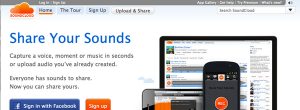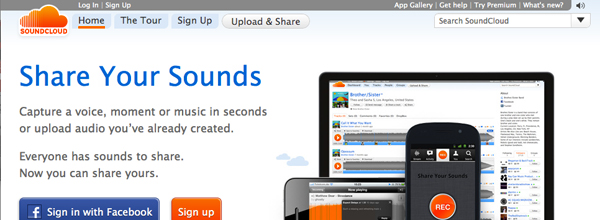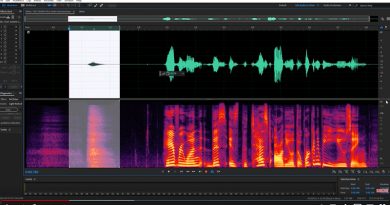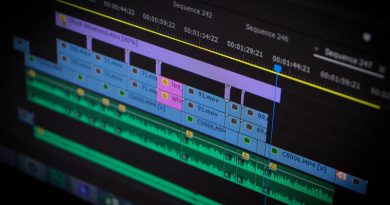Nice post from journalism.co.uk on tools and apps every journalism student should know about
 Trying to figure out what apps to load to those new staff iPods or iPads? Sarah Marshall posted a nice list of 22 tools and apps that you should take a look at. It has some of the standards like Twitter and Google Docs, but it also has others you might not have heard of like iSaidWhat?! and Audioboo. Go check out their list and then come back and recommend another app or two you would have added to the list in the comments below.
Trying to figure out what apps to load to those new staff iPods or iPads? Sarah Marshall posted a nice list of 22 tools and apps that you should take a look at. It has some of the standards like Twitter and Google Docs, but it also has others you might not have heard of like iSaidWhat?! and Audioboo. Go check out their list and then come back and recommend another app or two you would have added to the list in the comments below.





I’m currently in high school, but I’ve always had a love for movies, and want to look into become a critic. I realize this is probably a hard industry to get into, but I would like to try.
Makki, B., & Makki, B. (2012). The Impact of Integration of Instructional Systems Technology into Research and Educational Technology. Creative Education, 3(2), 275-280.This report was wierttn by an Engineering Professor from Norway and a Law Professor from Germany. Their intent is to give a review of instructional system technology integration in educational literature, review principles of integration of instructional technology in educational technology and to discuss transitional periods of educational technology. They suggest that placing computers in a classroom is too often considered technology integration. Physical technology has to be paired with human competence to be effective. It uses data from many studies to make this point. The article then focuses on ways that teacher education programs can be more effective at achieving this goal. In contrast to the other articles I have read so far, this article is well researched and insightful. It addresses a misperception that I see too frequently in education, that more computers or the latest technology, without proper training and support for the teacher, will increase student achievement. Tfcrel, Y., & Johnson, T. E. (2012). Teachers’ Belief and Use of Interactive Whiteboards for Teaching and Learning. Journal Of Educational Technology & Society, 15(1), 381-394.This study surveyed 174 secondary Turkish teachers, who have recently used interactive whiteboards (IWBs), to investigate the perceptions of teachers regarding IWB use in schools. The researchers asked the following questions. What are the main sources of IWB training for teachers? What IWB training topics do teachers need? How much is each IWB feature being used? What are teachers’ perceptions about their IWB use? Is there a relationship between teachers’ IWB use frequencies and 1) self-reported competencies, 2) discipline areas, and 3) teacher perceptions?The study does not seem to be of much value because it is totally based on the teachers own perception of if they are being effective or not. However, it does discuss some important limitations to the study. Similar to a report from Makki, it suggests that teacher training and abilities are major limiting factors on whether the technology is successful at improving student achievement.Rivero, V. (2006). Let Technology Be Your Guide. American School Board Journal, 193(11), 52-53.This article is wierttn for school board members but is relevant to any educator who would like to improve the math or science scores of his or her students. The author lists seven ways a district can use technology to improve math and science education in its schools. The first two ways deal with getting connected by bringing in experts, partnering with a mentoring organization or going to explore a museum. The next four ways are suggestions of websites, software and DVD’s that may be useful. The last way deals with the tracking of a student’s progress using PowerSchool. This article does provide some ideas that seem to be worth checking out even though it reads like an advertisement for the products it is recommending. It might also be useful for future research into the privatization of schools in America.Pilgrim, J., Bledsoe, C., & Reily, S. (2012). New Technologies in the Classroom. Delta Kappa Gamma Bulletin, 78(4), 16-22.This paper is wierttn to describe current and potential uses of technology in the classroom. It describes items like iPads, iPods, cell phones and many new apps that can be used on these devises. They suggest students can improve their organization skills using a calendar or agenda on a phone. Students can take pictures of teachers’ notes on the board. They can have all of their textbooks on their iPads. Googledocs can be used for collaborative projects to improve communication skills. I find most of these technologies useful and timesavers, although, I do not think they necessarily enhance higher-level thinking skills and problem solving as the article claims. I think a study is needed to make a claim like that. Never the less, there are many useful ideas in this article.Jones, K. (2012). ideas for integrating technology education into everyday learning. Children’s Technology & Engineering, 16(4), 7-9.This article is wierttn by a teacher of P-5 Engineering Technology Education. Its intended audience is probably elementary school teachers. It has multiple ideas to integrate the history of technology into any elementary language arts, math, science or social studies classroom. For example, designing a timeline poster illustrating the development of communication methods and how they have shaped our culture. It has some good ideas for interdisciplinary projects but the way the students present their information does not take much advantage of many of the wonderful technologies we have available to us today. This article will probably not be of much use to me.Lacey, G. (2010). 3D Printing Brings Designs to Life. Tech Directions, 70(2), 17-19.The author of this article is a marketing director, which may give him bias in writing an article like this but the information seems reasonable. A 3D printer creates three-dimensional objects that are designed using any CAD program by interpreting the CAD file into thin plastic layers that are built upon each other. These objects can be used as prototypes of ideas that students have designed. The article suggests that using one of these printers is a great way to get students interested in engineering and designing by giving them an instant hands-on example of their idea. They can also test their prototype and make changes to their design if necessary. The article also cites a couple studies that show the U.S. is not doing well in luring people into engineering programs.K-12 Science, Technology, Engineering, and Math (STEM) Education for America’s Future. (2010). Education Digest, 76(4), 42-46.This report was ordered by President Barack Obama to develop specific recommendations to ensure the U.S. is a leader in STEM education. The President’s Council of Advisors on Science and Technology translated reports from the last two decades into a program of federal action. In science and mathematics, the U.S. ranks in the middle to the low end in international comparisons. To change this, the report has seven major recommendations. The first is for federal support of the Common Core Standards, a state-led movement for shared standards in math and science. The second is for the recruiting and training of 100,000 STEM teachers over the next two decades. The third is to recognize and reward the top 5% of the nations STEM teachers. The fourth is for the use of technology to drive innovation. The fifth is to create opportunities for inspiration through individual and group experiences outside the classroom. The sixth is to create 1,000 STEM –focused schools over the next decade. The seventh is to ensure strong and strategic national leadership.Connolly, P. J. (2011). Is the STEM gap illusory?. Eweek, 28(2), 38.The author, a senior technical analyst, presents his opinion on whether or not the STEM gap is worth closing. He starts by implying that people were just fine using fire or the telegraph without knowing how they worked. According to Connolly, today most companies only use IT to support their business therefore; having a deep knowledge in IT is unimportant, This article seems to by saying that because not everyone will grow up to be engineers or mathematicians, we should not try to expose as many students as possible to these areas. He uses himself as an example. He states that he has spent 25 years in IT but finds programing tedious and shouldn’t be forced to learn it. The problem with this logic is that he is a grown adult who has had time to discover what he likes and dislikes. I wonder how he found his love of IT. It is hard to have a passion for something that you have never been exposed to.Kopcha, T. J. (2010). A systems-based approach to technology integration using mentoring and communities of practice. Educational Technology Research & Development, 58(2), 175-190. doi:10.1007/s11423-008-9095-4This article is wierttn by an Assistant Professor in the Department of Educational Technology at San Diego State University. Its purpose is to present a mentoring model of technology integration in schools. The model has four stages: Initial setup, Teacher preparation, Curricular reform, and Community of practice. Within each stage, a mentor helps the teachers at the school in four categories: Mechanics, Systems, Culture, and Curriculum. At stage four, the mentor is starting to form teacher technology leaders at the school, with the goal of putting the mentor out of work at that school. This article makes a lot of sense. It seems to agree with two previous articles, Make and Turel, that a teachers training and comfort levels are the biggest factors of the effectiveness of technology. One important point not raised by the article is that this model only works if you have a highly effective mentor. Bellamy, J. S., & Mativo, J. M. (2010). A Different Angle for Teaching Math. Technology Teacher, 69(7), 26-28.The authors, a student and an assistant professor, at University of Georgia, share their thoughts on the goals and achievements of the technology curriculum in middle schools. The article offers a couple ideas of how to bring real-world examples into a math classroom such as using the Pythagorean Theorem to square a wall. They suggest bringing in professionals because students will pay special attention when a knowledgeable person describes his or her job. They also suggest that a technology classroom is an ideal supplement to other subjects because it is able to reinforce what is taught through hands-on learning and practical examples. The authors hint that a technology classroom has the ability to provide more of these types of experiences because they are not bound to standardized tests. The article is not researched based nor does it present any information that a middle school teacher probably does not already assume.